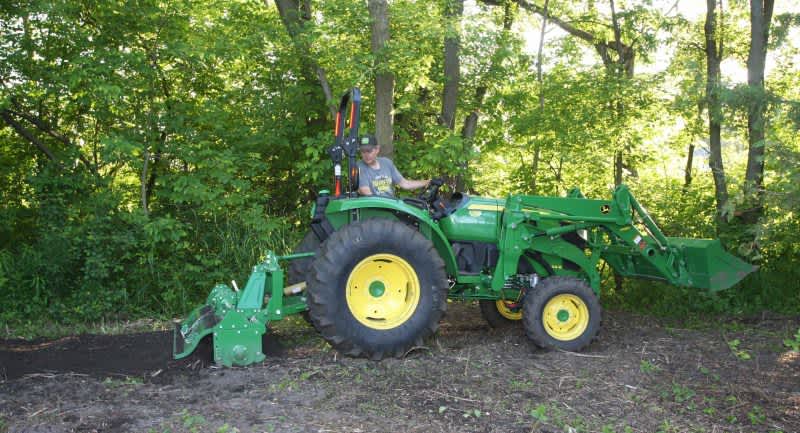Set A Whitetail Buffet: Planting Fall Annuals for Deer Food Plots
OutdoorHub Staff 07.26.16

Late summer into early fall is a great time to plant food plots that will boost your odds of seeing more deer and tagging a buck in the hunting seasons ahead.
Many hunters associate spring plantings with the food plot scene, and for good reason. These early plots provide great sources of nutrition for whitetails during the spring and summer months. Later plantings are more about attracting deer to your stomping grounds during hunting season.
Nutrition is a bonus, especially for helping post-rut bucks replenish their reserves as winter tightens its grip on the land.
Planting later plots is a bit different than spring seeding in some ways, while other aspects are similar. For example, site selection is critical no matter when you plant.
With late summer and fall plots, the goal is bringing deer within shooting range during daylight hours. Choose areas in close enough proximity to bedding areas and other sanctuaries so deer will arrive at the dinner table or at least pass your stand before darkness falls.
The presence of stand sites is likewise key. In an ideal world, you’ll have a few trees to choose from so you can play the wind. But ground blinds are great options as well. Bottom line, position your plots to take full advantage of travel corridors, tree cover and other natural factors that could help you waylay an incoming buck.

Working the Soil
Soil prep and a soil test are likewise important elements of any well-planned plot planting endeavor, regardless of time of year.
Soil tests ensure your ground is primed to produce a bumper crop. They’re easy to take, too. University extension offices, co-ops and local mills that sell seeds are all potential allies in the quest for a fertile field. When collecting samples, be sure to gather soil from different areas of the plot and mix it together, so you get a true perspective of what your plants will need to thrive.
In lieu of a full-blown soil test, hand-held pH meters can give you a fast idea of your land’s alkalinity and acidity. Many plants do well with a pH above 6.0 and less than 8.0, but you should always check the specific recommendations. When possible, test the soil and add lime as needed 6 months ahead of the planting date to give the lime time to interact with the soil.
As a bonus, some meters also measure soil moisture, which is a big deal in late summer and fall. Barring healing rains, seeds sown on scorched earth rarely bear fruit. Another easy way to test soil moisture is taking a handful of dirt in your hand and squeezing it into a ball. If the soil falls apart when you release your grip, it’s too dry. If it holds its shape, you’re good—provided no water oozes out under pressure, which means the location is probably too wet.
Site prep includes applying the necessary lime and fertilizer suggested by soil testing. But it also includes tillage. Deer food plot gurus with the Texas Parks and Wildlife Department say a cool-season food plot should be lightly disked 30 to 45 days prior to the late summer or fall planting date, and once more right before seeding.
In areas of thick, soddy cover, however, more prep can be better. For example, I’ve attacked hellish stands of tangled canary grass and other deeply-rooted vegetation by first mowing it with a rotary cutter, then breaking it with a disk, turning it over with a plow, giving it another pass with the disk and finally finishing it off with a tiller. A light ATV drag can also be helpful before or after sowing.

Choose Your Entrees
A variety of crops make fine fall forage, and one of my favorites is winter field peas. Whitetails love the stems, leaves and peas, so they’re attractive at all stages of growth from emergence to flowering. Plus, you can use them as both a single attractant or in combination with other plants such as clover, brassicas, small grains and grasses.

Winter wheat is a hardy cereal grain that sprouts quickly and grows as heat and moisture allow. Frost-tolerant, it provides tender green shoots after more delicate plants like oats perish. It’s worth noting that cereal rye is another option, but deer tend to find wheat more palatable.
Turnips are another solid choice. These high-protein members of the brassica clan let you double-down on menu items. Their hearty green leaves turn sweet after the first frost, while deer dig the tubers out of the soil as long as they’re able.

Whichever types of forage you choose, it pays to compare different varieties from various seed companies. Lynx winter field peas, for example, are tannin-free and sweeter than Austrian Winter field peas. They’re also winter hardy to a whopping minus 5 degrees for longer production, and exhibit great regrowth—which is important because whitetails often mow down pea plants as fast as they can.
Planting a fall food plot requires a little planning and elbow grease, but the rewards of setting the table for a whitetail buffet are well worth the effort. As a plus, many plot plants persist over winter. So don’t be too surprised when wild turkeys and other wildlife move in to enjoy the bounty next spring.


